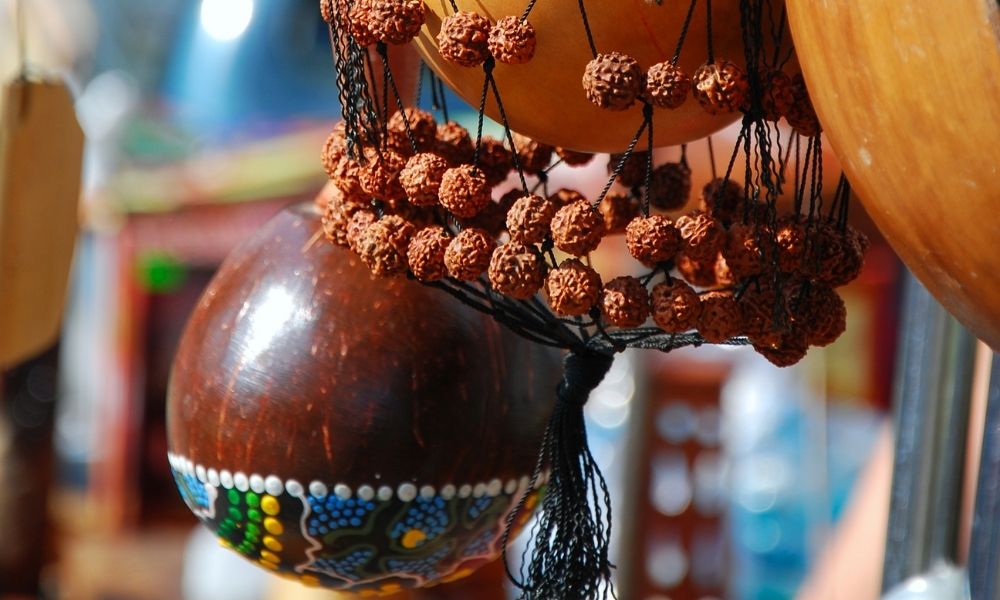Top Authentic Native American Drum Accessories
Native American drums are sac..
 ">
">The process of creating shaman rattles is long and complex. They need to be soaked, laced, filled, dried, emptied, and filled again, all during the course of several days. As with other sacred Native American instruments, they should be treated with care. When an artisan is crafting a rattle, it’s important for them to treat the hide, stick, and other materials with ceremony, respect, prayer, and gratitude. If you’re interested in understanding how a shaman rattle is made, this guide will teach you about the steps of making one.
The first step is preparing the rawhide by cutting, shaping, and soaking it. The two pieces of the rattle are cut into unique shapes consisting of a circle and a small, square-shaped extension—the neck. Once the pieces of rawhide are cut, they’re placed into a container of water, where they soak until they’ve become soft and pliable. The soaking process can take anywhere from four hours to a full day, depending on the material used. Horse and bear hide soak the fastest, while buffalo and moose hide soak the slowest.
Once the two pieces have been soaked, it’s time to lace them together. The pieces of rawhide are placed together, with the rough sides facing each other. Using a tapestry sewing needle, the artisan threads sinew through the rawhide. They lace through holes in the rawhide in sequence, tightly looping the sinew twice through each hole. Once the final knot is laced, the sinew is tied into a knot on one end. The artisan fills the rattle with sand through the side that hasn’t been tied. The sand is firmly packed inside, giving the rattle its rounded appearance.
Before drying, the ends of the sinew are wrapped around the rattle’s neck and tied together. A different piece of string is tied to the bottom end of the stick. The other end of the string is hung, leaving The rattle is suspended upside-down in the air by the other end of the string and left this way until the head dries. The drying process usually takes a day. Once the rattle is dried, it’s taken down from its hanging place. The string around the neck is removed, and the rattle is drained of sand. To remove any stubborn particles of sand, the artisan might fill the rattle head with corn, small stones, or beads and shake it around.
Understanding how a shaman rattle is made includes knowing how to assemble it once the pieces have been cut, shaped, dried, and otherwise prepared. During assembly, the rattle head is filled with corn or other materials until it produces the desired sound. Once the rattle is filled, the stick is placed inside the neck of the rattle. This becomes the handle. The artisan secures the neck and the stick together with glue or a natural adhesive. The sinew is securely tied around the neck. Once the glue dries, the handle is wrapped with leather and secured with extra adhesive. With that, the rattle is finished!
Tachini Drums is the number one place to find authentic, handcrafted Native American rawhide rattles for sale. Come browse our wide selection of Native American instruments and supplies, and let our products connect you with the heartbeat of Mother Earth.